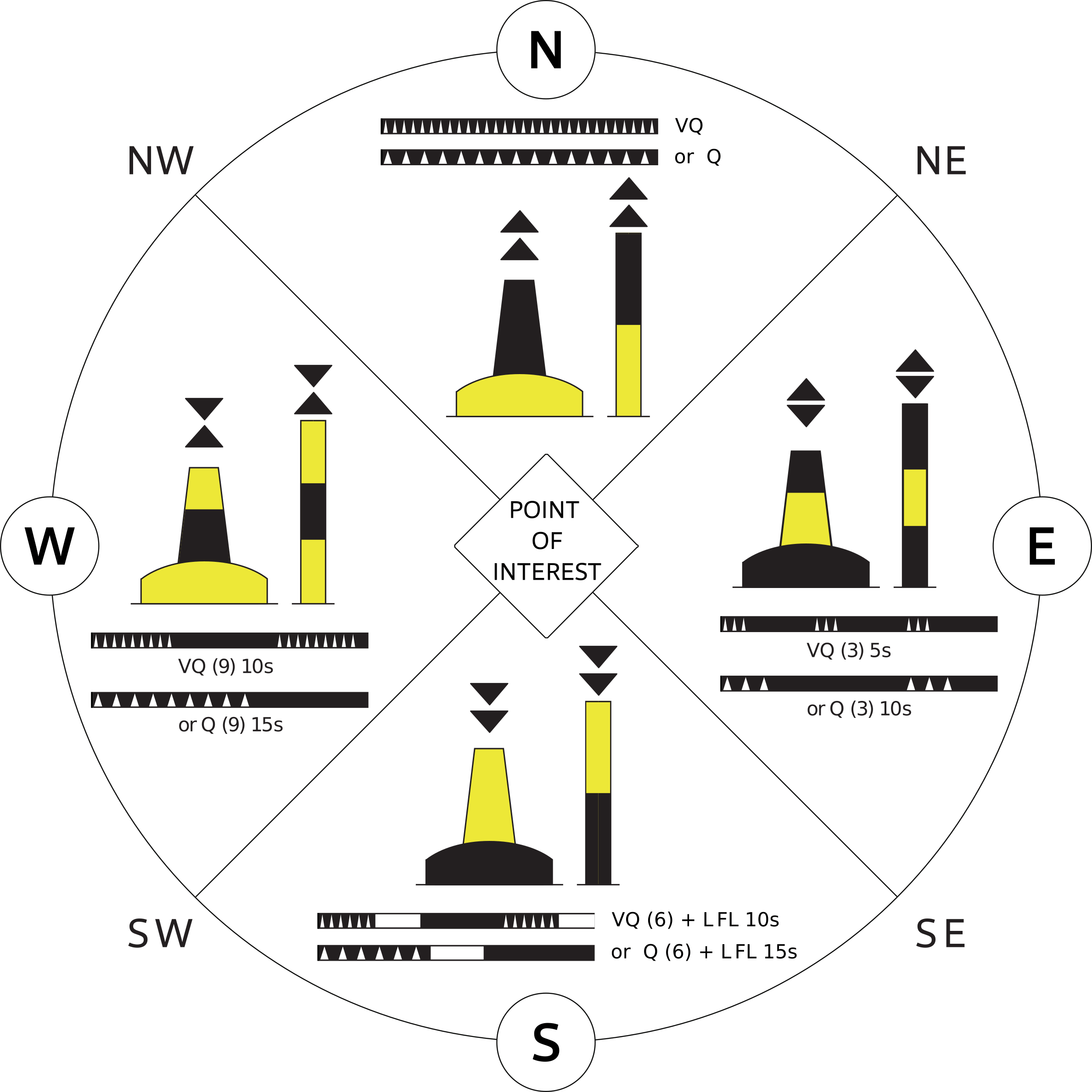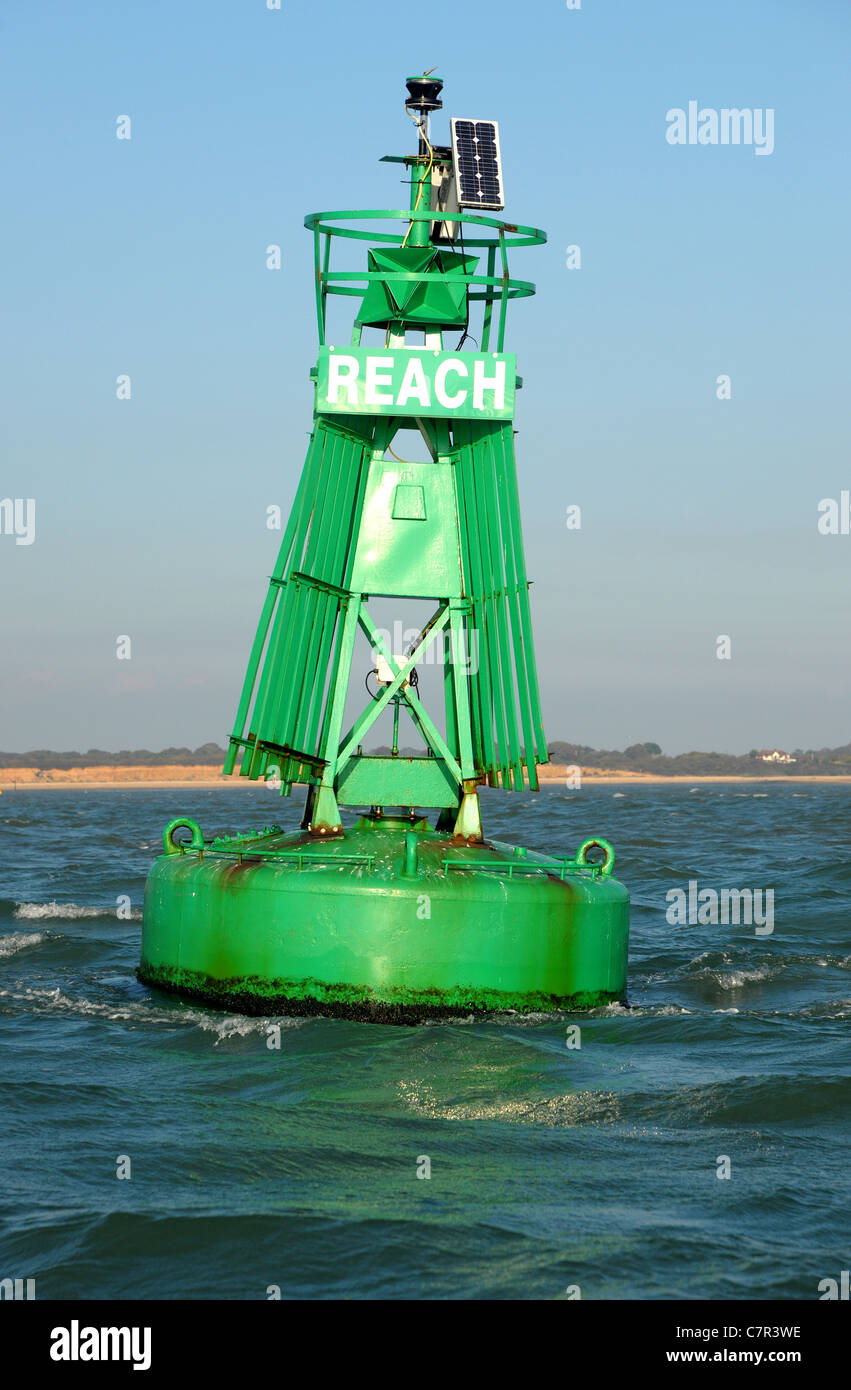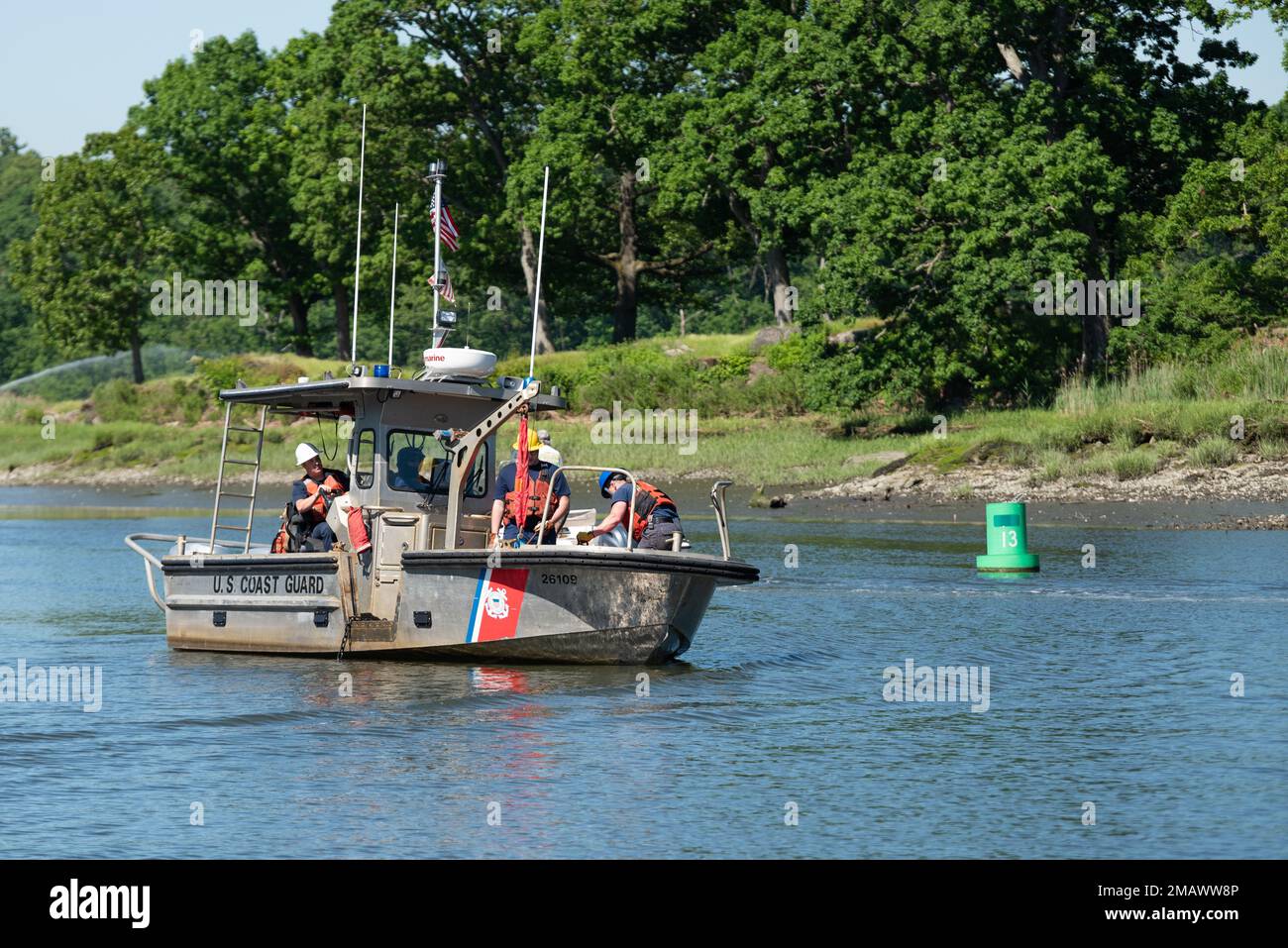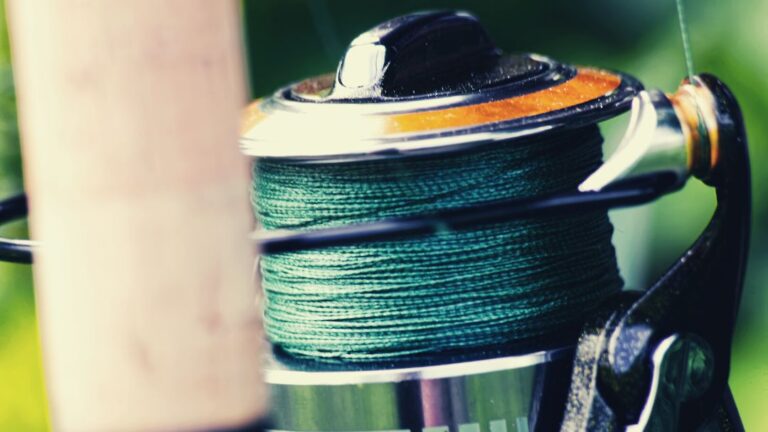What Color are Safe Water Markers? And Other Buoy Tips
Safe water markers are vital for navigation. They guide boats and ensure safety.
Understanding these markers is crucial for anyone who spends time on the water. Different markers use specific colors and shapes to convey important information. Knowing what each color and symbol means can help prevent accidents and keep everyone safe. In this post, we will explore the colors of safe water markers and discuss other common buoy markers.
By the end, you’ll have a clear idea of how to read these signs and navigate waterways safely. Let’s dive into the world of water markers and buoys.
Safe Water Markers
Safe Water Markers are crucial navigational aids for maritime activities. They indicate navigable waters, ensuring safe passage for vessels. Understanding their color and design, as well as their purpose and usage, is essential for any mariner.
Color And Design
Safe Water Markers are easily identifiable due to their distinct color and design. These markers are always painted in red and white vertical stripes. The stripes alternate, making them highly visible even from a distance. Additionally, they often feature a single red sphere on top, further aiding in their recognition.
| Feature | Detail |
|---|---|
| Color | Red and White Vertical Stripes |
| Topmark | Single Red Sphere |
Purpose And Usage
The primary purpose of Safe Water Markers is to indicate safe and navigable waters. They are placed in areas where vessels can travel without hazards. These markers are often found at the beginning of a channel or in the middle of a navigable waterway.
- Indicate safe navigation routes
- Mark the start of a channel
- Placed in the middle of navigable waters
Understanding the purpose and design of Safe Water Markers ensures safer maritime navigation. Mariners should always be aware of these markers to avoid potential dangers.

Credit: sailingissues.com
Types Of Buoys
Buoys are essential for safe navigation in waters. They provide important information to boaters and help prevent accidents. Understanding the different types of buoys can enhance safety and ensure smooth sailing. In this section, we will explore two main types of buoys: Navigation Buoys and Regulatory Buoys.
Navigation Buoys
Navigation buoys guide boaters through safe water channels. They help mark hazards, safe passages, and underwater obstructions. There are several types of navigation buoys:
- Port-hand buoys: These are green and mark the left side of the channel when heading upstream.
- Starboard-hand buoys: These are red and mark the right side of the channel when heading upstream.
- Safe water markers: These are white with red vertical stripes. They indicate safe water all around.
Regulatory Buoys
Regulatory buoys convey important information through symbols and colors. They help enforce rules and indicate restricted areas. Some common regulatory buoys include:
- Control buoys: These are white with orange circles. They indicate speed limits and other controls.
- Hazard buoys: These are white with orange diamonds. They mark dangerous areas like rocks or shoals.
- Information buoys: These are white with orange squares. They provide information like distances or directions.
Color Coding
Understanding the color coding of buoys is crucial for safe navigation. Safe water markers and other buoys are color-coded for easy recognition. This guide will help you understand what each color signifies and how it can vary by region.
Meaning Of Colors
Buoys use specific colors to convey important information:
- Red: Indicates the right side of the channel when returning from the sea.
- Green: Marks the left side of the channel when returning from the sea.
- Yellow: Usually indicates special areas or features like fishing zones or no-wake zones.
- Black and White: Often used for safe water markers, indicating navigable water all around.
- Orange: Warns of dangers or restricted areas.
Regional Variations
Color meanings can vary by region. Here is a quick reference:
| Region | Red Buoys | Green Buoys |
|---|---|---|
| North America | Right side of channel | Left side of channel |
| Europe | Left side of channel | Right side of channel |
These differences make it essential to know the local buoyage system. Always check regional guidelines before heading out on the water.

Credit: www.alamy.com
Shapes And Symbols
Understanding shapes and symbols on water markers is essential for safe boating. These markers guide boaters and help prevent accidents. Knowing their meanings can enhance your safety on the water.
Common Shapes
Water markers come in various shapes. Each shape has a specific purpose and meaning. Buoys are often cylindrical or conical. These shapes help them stay upright in the water.
Another common shape is the spherical buoy. These are round and easy to spot. They mark safe areas and hazards. There are also pillar-shaped markers. They are tall and often have lights on top.
Recognizable Symbols
Symbols on water markers convey important information. A diamond shape often indicates danger. When you see a diamond, proceed with caution. A circle usually marks controlled areas.
Rectangles or squares provide directions or information. These symbols are easy to recognize. A cross within a circle means no boating. Understanding these symbols ensures a safe boating experience.
Placement And Location
The placement and location of safe water markers and other buoys are crucial for navigation. Proper positioning ensures that sailors, fishermen, and other water users can navigate safely. Various factors influence the strategic positioning and environmental considerations of these markers.
Strategic Positioning
Strategic positioning involves placing the markers in locations where they can be easily seen and understood. This often includes:
- Near shipping lanes
- At harbor entrances
- Along busy waterways
Markers must be visible from a distance. They guide vessels away from dangers like rocks and shallow waters. Buoys often include lights or reflective materials to enhance visibility at night.
Environmental Considerations
Environmental factors play a significant role in the placement of buoys. High traffic areas and weather conditions are key considerations. For instance:
- Strong currents may displace poorly anchored buoys.
- Areas with heavy fog require more lighted markers.
- Buoys must withstand harsh weather conditions.
Authorities also consider the environmental impact. They avoid placing markers where they might damage ecosystems or wildlife habitats. Proper placement ensures both safety and environmental protection.
Maintenance Tips
Maintaining safe water markers and buoys is essential for ensuring safety on the water. Proper maintenance helps in keeping them visible and functional. Here are some maintenance tips to follow for optimal performance.
Regular Inspections
Conduct regular inspections to check for any damage or wear. Inspect the markers for cracks, fading, or any signs of deterioration. Look for loose parts and ensure they are securely attached. Make a checklist to ensure you cover all aspects during inspections.
Cleaning And Repairs
Keep the markers clean to maintain their visibility. Use a mild detergent and water to wash off any dirt or algae. Avoid harsh chemicals that might damage the material. Inspect the markers for any needed repairs. Fix small issues promptly to prevent them from becoming bigger problems.
Here is a simple cleaning routine:
- Rinse the marker with fresh water.
- Apply a mild detergent with a soft brush.
- Scrub gently to remove any buildup.
- Rinse thoroughly and let it dry.
For repairs, have a basic toolkit handy:
- Waterproof adhesive
- Replacement parts
- Basic tools (screwdriver, pliers)
Safety Precautions
Understanding the various water markers and buoys is crucial for safe boating. Knowing the colors and meanings of these markers can prevent accidents and ensure a smooth journey on the water. Let’s dive into some essential safety precautions to follow while navigating waterways.
Avoiding Collisions
To avoid collisions, always keep a lookout for water markers. Safe water markers are usually white with red vertical stripes. These markers indicate unobstructed water on all sides. Maintain a safe speed and stay aware of your surroundings. Use the following tips:
- Keep a safe distance from other boats.
- Follow the navigation rules and signals.
- Use proper lighting at night.
Emergency Situations
In emergency situations, knowing the locations of buoys and markers can be lifesaving. For example, hazard markers are white with black vertical stripes. These markers indicate dangers like rocks or shallow areas. Follow these steps during emergencies:
- Stay calm and assess the situation.
- Use a VHF radio to call for help.
- Signal other boats using flares or a horn.
Remember, safety is your first priority. Knowing these markers and the precautions can make your boating experience safer and more enjoyable.
Technological Advances
Technology has significantly transformed the way we navigate and ensure safety on water. Smart buoys and the integration with navigation systems are prime examples of these advancements. These innovations enhance the accuracy and reliability of maritime markers.
Smart Buoys
Smart buoys are equipped with advanced sensors and communication systems. They provide real-time data on water conditions. This includes information on water temperature, salinity, and currents.
These buoys can also detect and report potential hazards. They help in ensuring a safer navigation environment. Their ability to communicate with ships and shore stations is crucial.
Here are some key features of smart buoys:
- Real-time data transmission
- Advanced sensors for various measurements
- Hazard detection capabilities
- Communication with ships and shore stations
Integration With Navigation Systems
The integration of buoys with navigation systems has been a significant advancement. This integration allows for more precise and efficient navigation.
Navigation systems can now receive data directly from smart buoys. This data includes real-time updates on water conditions and potential hazards. It helps in making informed decisions quickly.
Some benefits of this integration include:
- Enhanced accuracy in navigation
- Real-time hazard updates
- Improved safety for vessels
- Efficient route planning
Table comparing traditional buoys vs. smart buoys:
| Feature | Traditional Buoys | Smart Buoys |
|---|---|---|
| Data Transmission | None | Real-time |
| Sensors | Basic | Advanced |
| Hazard Detection | Limited | Advanced |
| Communication | None | Ships and Shore Stations |
These technological advances are shaping the future of maritime navigation. They provide safer and more efficient ways to navigate water bodies.

Credit: www.alamy.com
Frequently Asked Questions
What Color Are Safe Water Markers?
Safe water markers are typically red and white with vertical stripes. They indicate safe navigable waters.
What Do Buoy Colors Mean?
Buoy colors indicate navigational information. Red buoys mark the right side, green buoys mark the left side.
What Is A Safe Water Buoy?
A safe water buoy indicates safe, navigable water all around. It’s marked by red and white stripes.
How Do You Identify Navigational Buoys?
Navigational buoys are identified by their colors and shapes. Red and green buoys mark channels.
Conclusion
Safe water markers play a crucial role in navigation. They are red or white. Knowing their colors ensures safety on the water. Understanding other buoys also helps you navigate better. Clear markers prevent accidents and guide you safely. Always pay attention to these essential navigation aids.
Stay informed and enjoy your time on the water.



